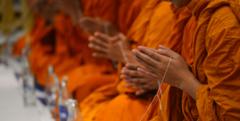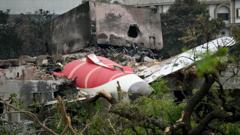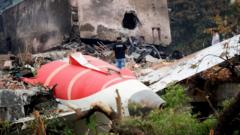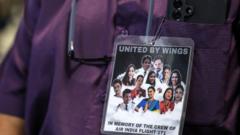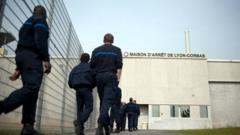The investigation into the crash of Air India Flight 171 is underway, with experts analyzing data and wreckage to determine what led to the plane's tragic descent just 30 seconds following departure from Ahmedabad.
Investigating the Air India Flight 171 Crash: A Deep Dive into the Unraveling Mystery
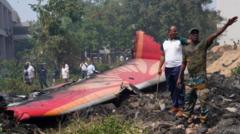
Investigating the Air India Flight 171 Crash: A Deep Dive into the Unraveling Mystery
As investigators scrutinize the wreckage of Air India Flight 171, questions abound about the cause of the aircraft's sudden crash shortly after takeoff.
Less than a minute: that’s all it took for Air India Flight 171 to fall from the skies and crash into a bustling neighborhood in Ahmedabad, sparking one of India’s most perplexing aviation inquiries. Investigators are now meticulously examining wreckage and retrieving data from the cockpit voice and flight data recorders of the Boeing 787 Dreamliner to ascertain what triggered this catastrophic event that claimed the lives of those onboard.
The plane, bound for London Gatwick and carrying 242 passengers along with significant fuel, departed Ahmedabad at 13:39 local time (08:09 GMT) just last Thursday. Almost immediately after takeoff, a mayday call was issued but communications abruptly ceased, leaving behind a trail of destruction engulfed in flames.
Captain Kishore Chinta, a seasoned investigator who previously worked with India’s Aircraft Accident Investigation Bureau (AAIB), described this incident as exceedingly rare—a controlled flight into terrain occurring merely moments after ascension. He emphasized the unconventional nature of such crashes, pointing to several potential causes that investigators will explore: dual engine failure due to bird strikes or fuel contamination, improper flap extension, maintenance errors, or even inadvertent crew actions resulting in fuel disconnection to the engines.
Investigators will utilize principles of triangulation and elimination to aggregate evidence from the wreckage with flight performance data to construct an understanding of the events leading to the tragic crash. Each burned cable, fractured turbine blade, and maintenance log found amidst the debris becomes a piece of the puzzle in this investigation. The first vital clues are expected to come from the engines, according to experts; whether they were actively generating power during the impact could shift focus to cockpit activities.
The flight’s black boxes, containing crucial voice and data recordings, have reportedly been retrieved from the crash site, offering insights into the incident’s brief final moments. These devices encapsulate extensive operational details, aiding in the establishment of how the flight progressed before its abrupt end. If data shows full power output from the engines at the time of impact, investigation efforts will shift to examining the aircraft's flaps and slats, which are critical for maintaining lift.
Compounding these concerns, analysts ponder the implications for Boeing and the aviation industry at large. The Boeing 787, now over a decade in operation with more than 1,100 aircraft worldwide, faces scrutiny as investigators seek answers to determine if this incident reflects a systemic issue or a unique failure for Flight 171.
Currently, India’s civil aviation ministry has reported no immediate sign of fault, noting that recent inspections of Air India’s Boeing 787 fleet have not raised any red flags. As the investigation unfolds, the decoding of data will be handled by Indian officials with participation from Boeing representatives and international oversight.
In addition to the preliminary analysis, investigators will delve into the aircraft’s maintenance records, the crew’s training and flight performance, and detailed history of aircraft operations. With advancements in technology providing a wealth of data compared to previous decades, the hope remains that early indicators of the crash’s causes can be identified swiftly even as the full investigation will take substantial time to ensure thoroughness.
As the wreckage analysis continues, every detail gathered will serve as a crucial building block in the search for answers, with the global aviation community closely monitoring developments.



